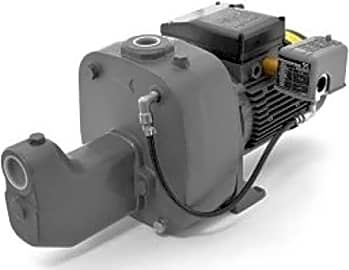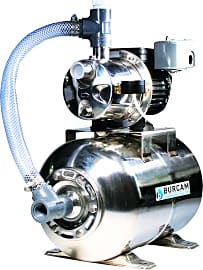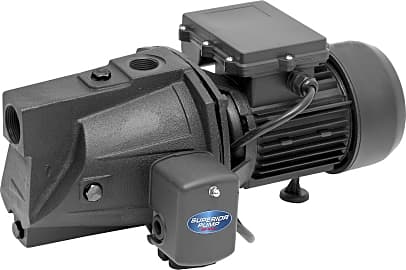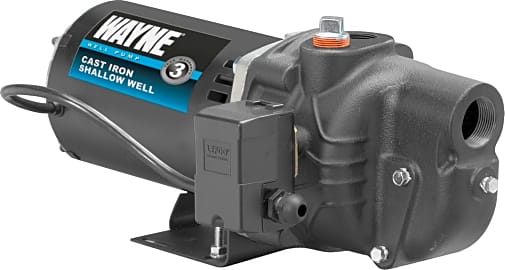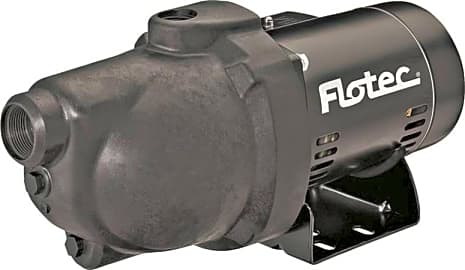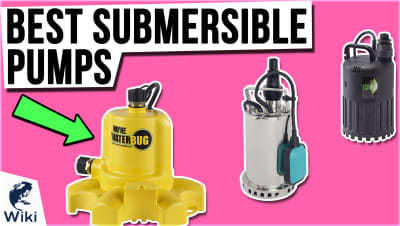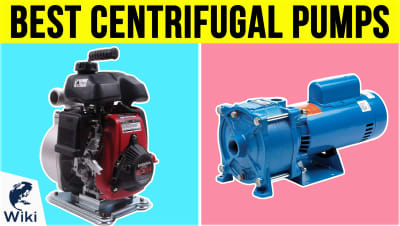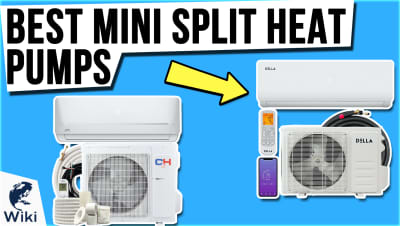The 8 Best Shallow Well Pumps

This wiki has been updated 39 times since it was first published in August of 2015. For use in homes and businesses in rural areas, one of these tough and long-lasting shallow well pumps will make efficient work of drawing up ground water and delivering it to your property's plumbing system. Our selection includes various durable options with easy-to-access components and powerful motors. For safety’s sake, all wiring should be performed by a qualified electrician. When users buy our independently chosen editorial choices, we may earn commissions to help fund the Wiki.
Editor's Notes
November 30, 2020:
Joining the list today is the Grundfos JP15S-CI, which is capable of pumping 18-1/2 gallons per minute at a flow capacity of 87 PSI. This low-maintenance choice incorporates a self-priming design as well as built-in ejector clean-out ports that help to keep the nozzle free of debris. It also incorporates a pre-wired pressure switch, so it’s easy to integrate with your existing plumbing system. It can extract ground water from depths as low as 25 feet. It’s from a Denmark-based company that’s one of the largest pump manufacturers the world, and produces more than 16 million pumps per year, including circulator pumps, submersible pumps, and centrifugal pumps.
The Pentair SNE-L remains in a prominent spot. Like the newly added Grundfos model, this one is made of a durable cast iron housing. It’s built for the long haul, with a well-insulated design and permanently lubricated ball bearings. We also remain partial to the Goulds BF03S, which is thoughtfully designed with the ability to self-adjust and a pull-out configuration for easy cleaning and servicing. It’s also got a corrosion-resistant coating that helps ensure its longevity. For another low-maintenance choice, look to the Burcam 506547SS, which comes factory assembled and includes an integrated cooling fan. This stainless steel model has a capacity of 19 gallons per minute. The Superior 94505 is a versatile model that can be used with 115- and 230-volt power supplies. It’s got thermal overload protection, a glass-filled thermoplastic diffuser and impeller, and a sturdy cast iron seal plate. No matter which pump you go with, for safety’s sake, it’s best to have it installed by a professional.
July 10, 2019:
Ideal for use in rural areas, shallow well pumps help to deliver ground water to the plumbing system of your home or business. Unlike submersible pumps, these are mounted above the well, and they work by drawing the water up through suction. Most can work with wells that have a maximum depth of 25 feet.
Joining the list is the Pentair SNE-L, which is built with a cast iron housing and features a drain port to make for an easy job of winterizing. It sets out to prime faster and handle more air, with a multi-port, polypropylene diffuser that’s precision molded and reinforced. It’s insulated well to help ward off excessive moisture and contaminants. This, along with permanently lubricated ball bearings, makes this a solution that’s built to last for years on end. And, its rigorous factory testing ensures everything is up to par.
Another new addition today is the Burcam 506547SS, which is built with a stainless steel body to resist corrosion. It’s built for the long haul, with an internal cooling fan that keeps the motor running at a safe temperature, as well as a full-time run capacitor. It comes from a Canadian company that has been manufacturing water system products for more than 40 years. Leaving the list in this update, due to availability concerns, is the Meditool Booster Pump.
Special Honors
Powerhorse Shallow Well Jet Pump Available from Northern Tool + Equipment, this rugged selection features a 1/2-horsepower motor, a handy dual voltage conversion switch, and thermal overload protection. It’s ideal for wells up to 25 feet deep. It’s made from durable cast iron and reinforced polymer components, and is part of a line of high-quality generators, engines, pressure washers, water pumps, and air compressors from Northern Tool. northerntool.com
Hydration For The Home: Establishing A Working Well
There are many reasons why ground water is a viable, and sometimes even preferable, source of water for human and agricultural use.
In most temperate regions of North America, ground water is one of the most reliable sources of potable water, and it accumulates in underground aquifers that are usually close enough to the earth's surface to be tapped with relative ease by digging an extraction well.
There are many reasons why ground water is a viable, and sometimes even preferable, source of water for human and agricultural use. Except in times of drought, ground water tends to be a dependable water source, thanks to the natural water table, or the saturation levels of the subterranean rock and soil layers. Ground water also resists pollution better than surface sources such as streams, lakes, or even man-made reservoirs. Thus, ground water is tapped as the single largest source of water for many municipalities.
Ground water can also be sourced on a much smaller scale. Individual properties can sink and establish their own working wells, tapping into their local ground water aquifers as either the primary or backup source of water for their home, farm, or other property type. And if the property in question is located in an area with a water table near the surface, a basic shallow well should be more than sufficient to supply the needed water. For wells dug down to depths no deeper than 25 feet below the surface, a shallow well pump should be more than adequate to move the water up and into the property's plumbing system.
Installing a well on your property is a process best left to professionals, and it is likely you will need to complete a permitting process prior to the commencement of its construction. A well is a substantial initial investment, but the opportunity for reliable, locally-sourced water is well worth the expense.
Choosing A Shallow Well Pump
The single most important factor involved in establishing a reliable well is the presence of plentiful ground water. But after that, the shallow well pump you choose for your well is the next critical consideration. A shallow well pump, sometimes referred to as a jet pump, is an electrically powered impeller system wherein a propeller-shaped unit draws water up and through the water tight shaft leading from the aquifer to the property's plumbing system. Once water has begun to flow up and past this impeller (these systems require initial "priming," or filling with water) the natural properties of a vacuum keep the water flowing as needed.
But after that, the shallow well pump you choose for your well is the next critical consideration.
Shallow well pumps range in price from around two hundred on the lower end, to around four hundred for more powerful models; so all units are relatively affordable, especially given the critical function they perform. First and foremost in your decision-making process must be a consideration of the volume of water your property needs. For a single family residence, most lower-priced pumps will suffice. For a property needing water for the home and for an irrigation system that will serve gardens or even fields of edibles, more water -- thus a more powerful pump -- must be extracted.
Next, consider the power source to which your shallow well pump will connect. Most units can work with the standard 120-volt electrical outlets found in most American homes; some shallow well pumps can also be adjusted to connect with the unique power supply arrangements of a property, such as in homes powered by solar panels, generators, or other setups.
Finally, consider the elements of the area in which your pump will run. If dust and debris are common around your property, make sure to find a unit with a dust shield. If the pump is likely to see heavy use, consider a unit with thermal overload protection. These and other considerations will help you establish the ideal well for your specific needs.
Shallow Well Pump Use And Maintenance
Keeping your property's well in good working order isn't a luxury, it's a necessity. If your well uses a well screen, make sure to periodically inspect and clean it so you ensure continual consistence in water flow volume. Also, check any grouted areas from time to time, as cracks can waste water and compromise well function.
If your well uses a well screen, make sure to periodically inspect and clean it so you ensure continual consistence in water flow volume.
Try to keep organic materials, ranging from mulch to compost to leaves, away from the well as much as possible, as they increase the potential for debris in the system. This is also true for hazardous materials like paint or fuel. Watch for any changes in water appearance, taste, or smell, as these and other signs may indicate a potentially dangerous issue.
And think beyond the well itself: while initial well installation is limited by setbacks, such as a 10-foot distance from electric lines, a 50-foot distance from grave sites, and a 75-foot setback from septic pits, also remember where your well is when you install other elements such as these. Just as you can't safely sink a well right next to a gas line, you can't later run a gas line right next to your well.



